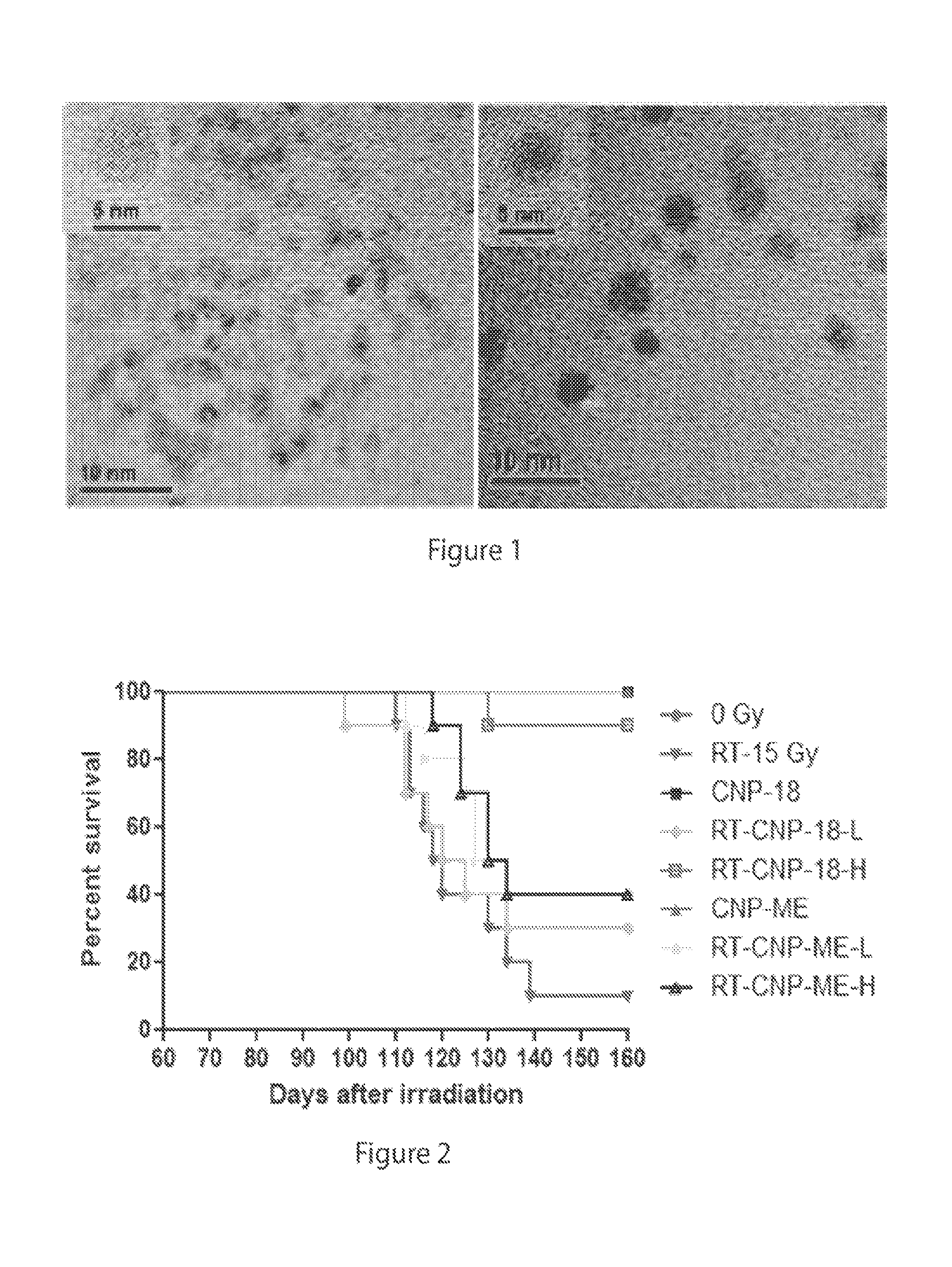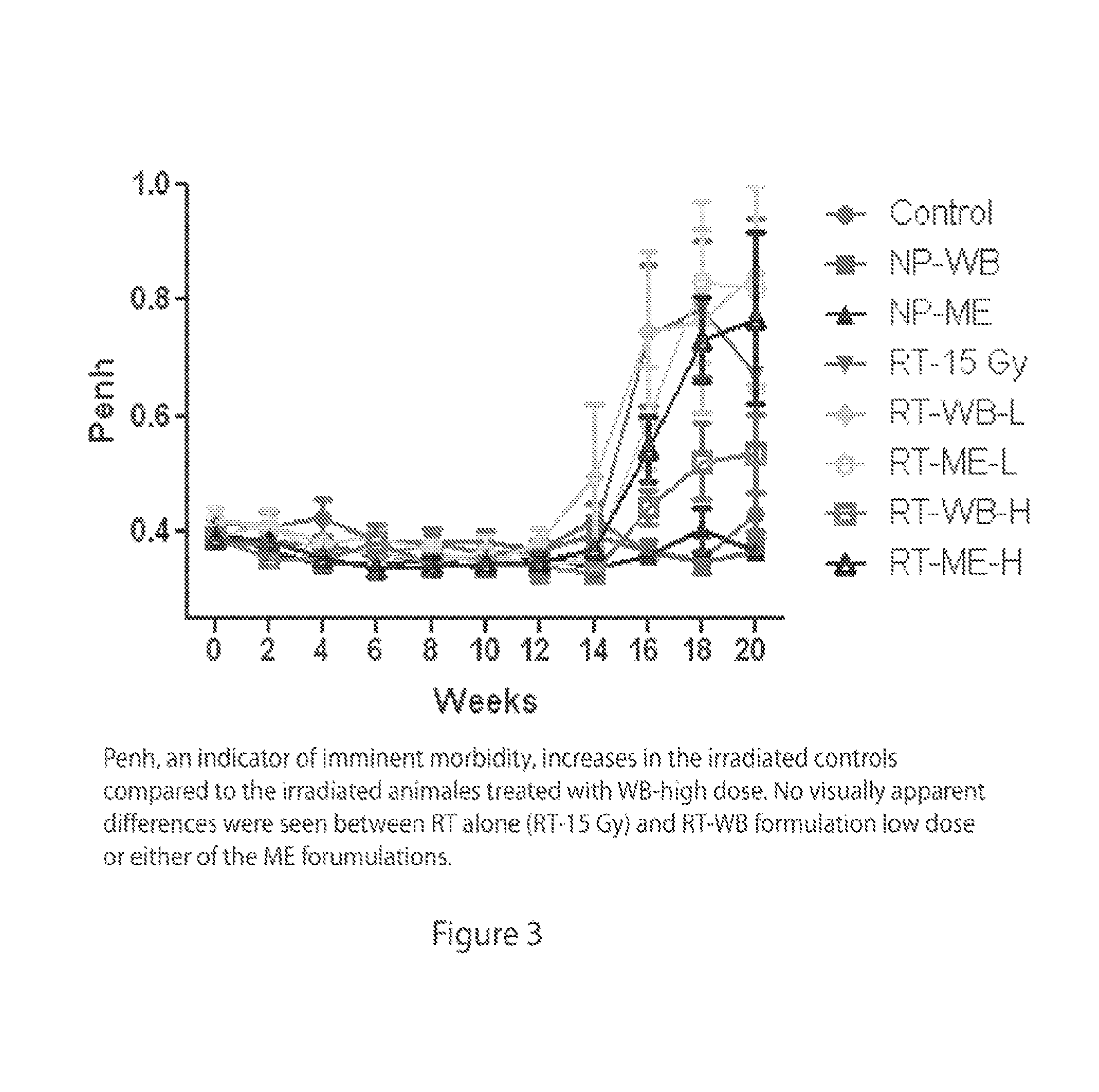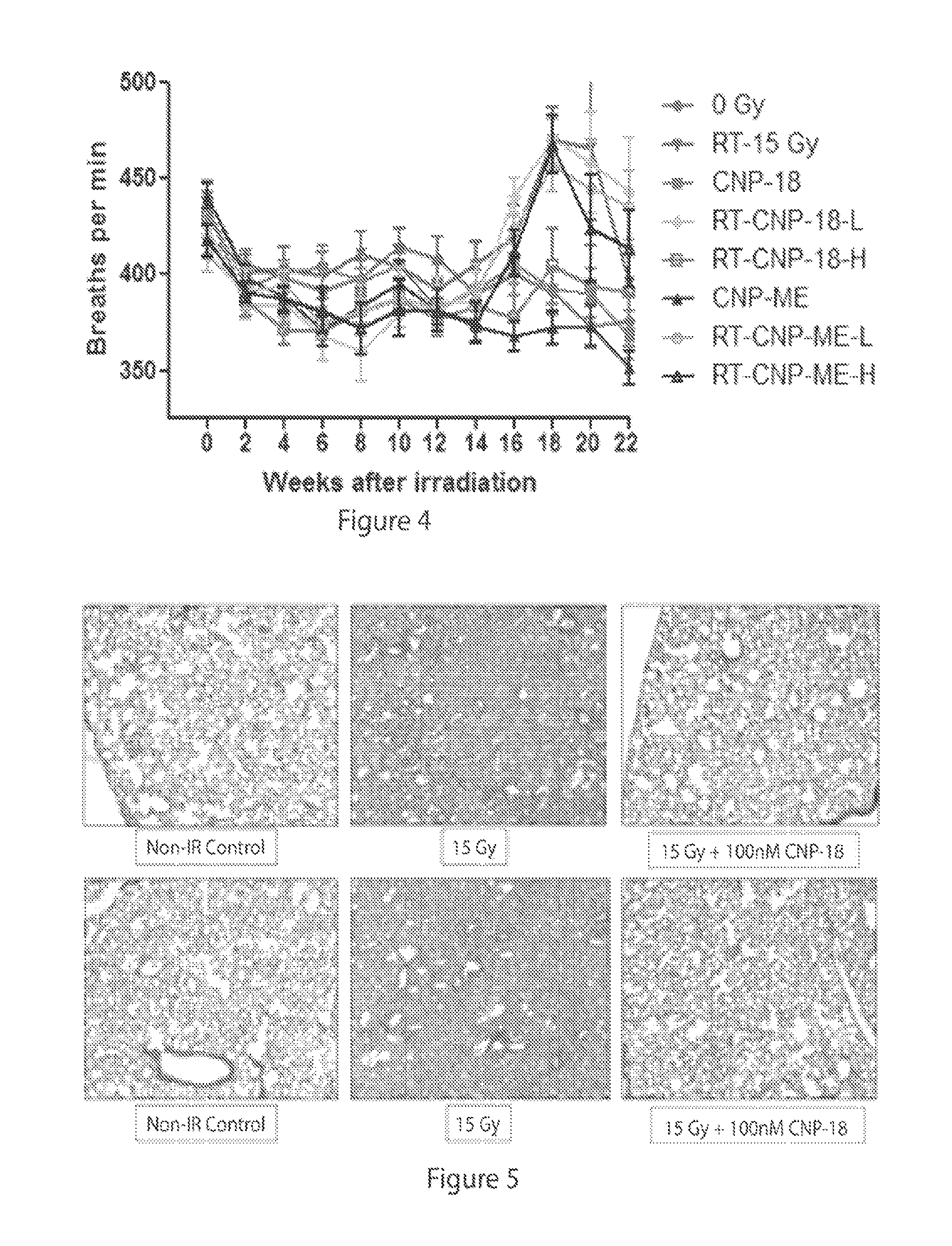Methods of using cerium oxide nanoparticles to mitigate or protect against radiation injury
a technology of cerium oxide and nanoparticles, applied in the field of nanoparticles, can solve the problems of no fda approved medical countermeasure (mcm) to mitigate lung damage, acute respiratory distress, etc., and achieve the effects of improving survival, reducing radiation exposure, and reducing radiation exposur
- Summary
- Abstract
- Description
- Claims
- Application Information
AI Technical Summary
Benefits of technology
Problems solved by technology
Method used
Image
Examples
examples
[0032]Radiation-induced lung injury has traditionally been divided into two phases: the early inflammatory phase and the late fibro-proliferative phase. Histologically, the pneumonitis reaction is characterized by edema, atypia and desquamation of alveolar epithelial cells, intimal proliferation and medial thickening, mononuclear cell infiltrates, giant cell formation, and inflammatory exudates with an absence of polymorphonuclear leukocytes. Hyaline membranes are also seen. Progressive interstitial fibrosis with fibro-obliteration of capillaries, thickened alveolar walls, and lipid-laden, foamy macrophages are seen during the late phase.
[0033]Under normal circumstances the cell is able to maintain an adequate homeostasis between the formation of ROS and its removal through particular enzymatic pathways or via antioxidants. However, following radiation exposure to the lung, there is an immediate and continuous increase in chronic oxidative stress that leads to vascular dysfunction, ...
PUM
 Login to View More
Login to View More Abstract
Description
Claims
Application Information
 Login to View More
Login to View More - R&D
- Intellectual Property
- Life Sciences
- Materials
- Tech Scout
- Unparalleled Data Quality
- Higher Quality Content
- 60% Fewer Hallucinations
Browse by: Latest US Patents, China's latest patents, Technical Efficacy Thesaurus, Application Domain, Technology Topic, Popular Technical Reports.
© 2025 PatSnap. All rights reserved.Legal|Privacy policy|Modern Slavery Act Transparency Statement|Sitemap|About US| Contact US: help@patsnap.com



